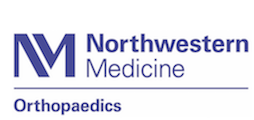|
|

|
« Back
I am 75-years-old with a very bad (painful!) case of spinal stenosis in my low back. I've had two weeks of physical therapy with no change in my symptoms. I'm starting to look for a neurosurgeon to put an end to this misery. But everyone I speak with tells me to avoid back surgery at all costs and to stick with conservative care for at least six months. How does a person do that when the pain is excruciating?
|
|
Pain from pressure on the nerves as a result of spinal stenosis can certainly be a deterrent in sticking with a plan of conservative care. And surgery can be the only way some patients obtain pain relief. But as you have discovered, the current practice is to try and manage symptoms using nonoperative techniques before considering surgery.
Spinal surgery can be done with minimally invasive techniques but more often, it is performed with an open incision. The risk of complications such as infection, dural tears (lining of the spinal cord), nerve damage, bleeding, and life-threatening blood clots makes this a second-tier choice at best.
Conservative care must be multi-modal meaning a combination of many different approaches. Pain control through medications, physical therapy, chiropractic care, acupuncture, and even relaxation/meditation techniques is strongly encouraged. And once nerve tissue is irritated, it can take six weeks up to six months to get control of the symptoms. But it is possible and even probable that with careful management, you will see some results soon.
Before considering open surgery, many patients try epidural steroid injections. Up to three injections (spaced apart by one to four weeks) of a numbing agent and antiinflammatory drug are placed into the area around the spinal nerve roots. Pain relief is the goal with the hope that reducing inflammation, reducing pressure on the nerves, and turning off pain signals can be achieved without surgery.
So, the first order of business is to get control of the pain. Your surgeon or primary care physician can help you with this. Medications may include antiinflammatories and analgesics (pain relievers) possibly even including narcotic drugs if less potent drugs are not effective. But do not depend on medications alone to do the trick. Make every effort to use any and even ALL of the methods for nonoperative care suggested. Given enough time, the body will often heal itself.
|
References:
|
|
|
« Back
|
|
|
|
*Disclaimer:*The information contained herein is compiled from a variety of sources. It may not be complete or timely. It does not cover all diseases, physical conditions, ailments or treatments. The information should NOT be used in place of visit with your healthcare provider, nor should you disregard the advice of your health care provider because of any information you read in this topic. |
 | All content provided by eORTHOPOD® is a registered trademark of Mosaic Medical Group, L.L.C.. Content is the sole property of Mosaic Medical Group, LLC and used herein by permission. |
|
